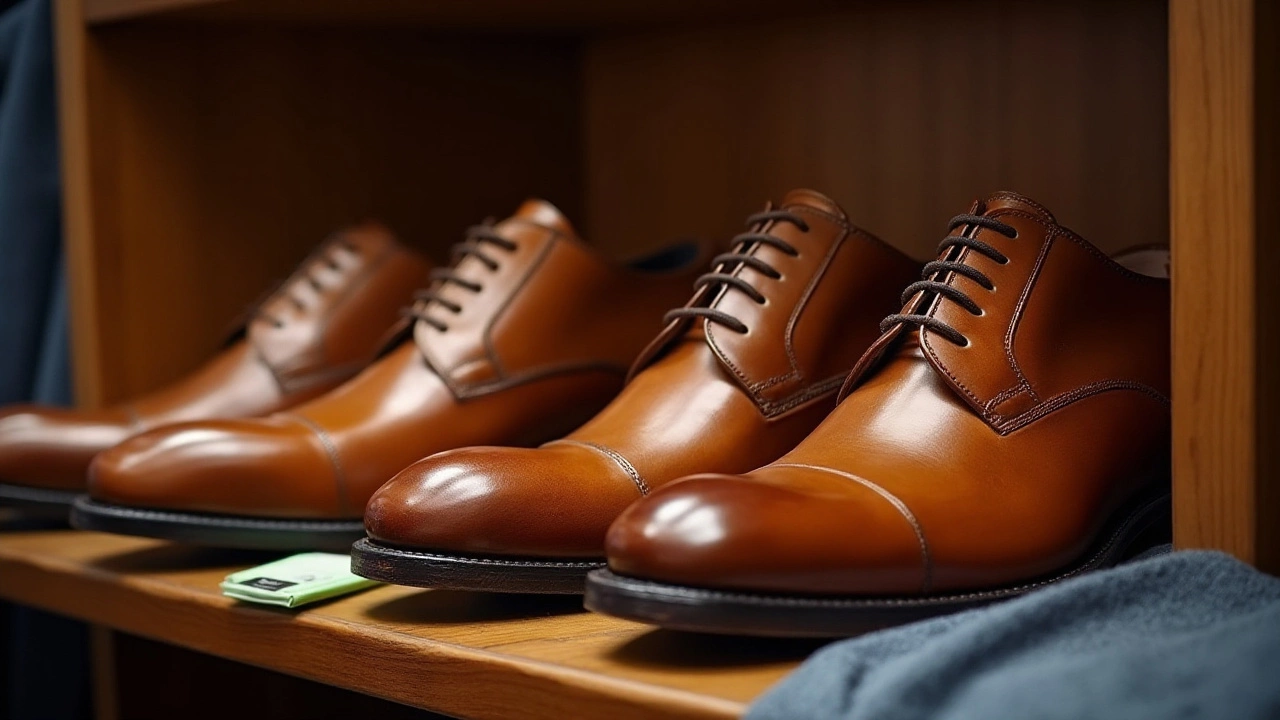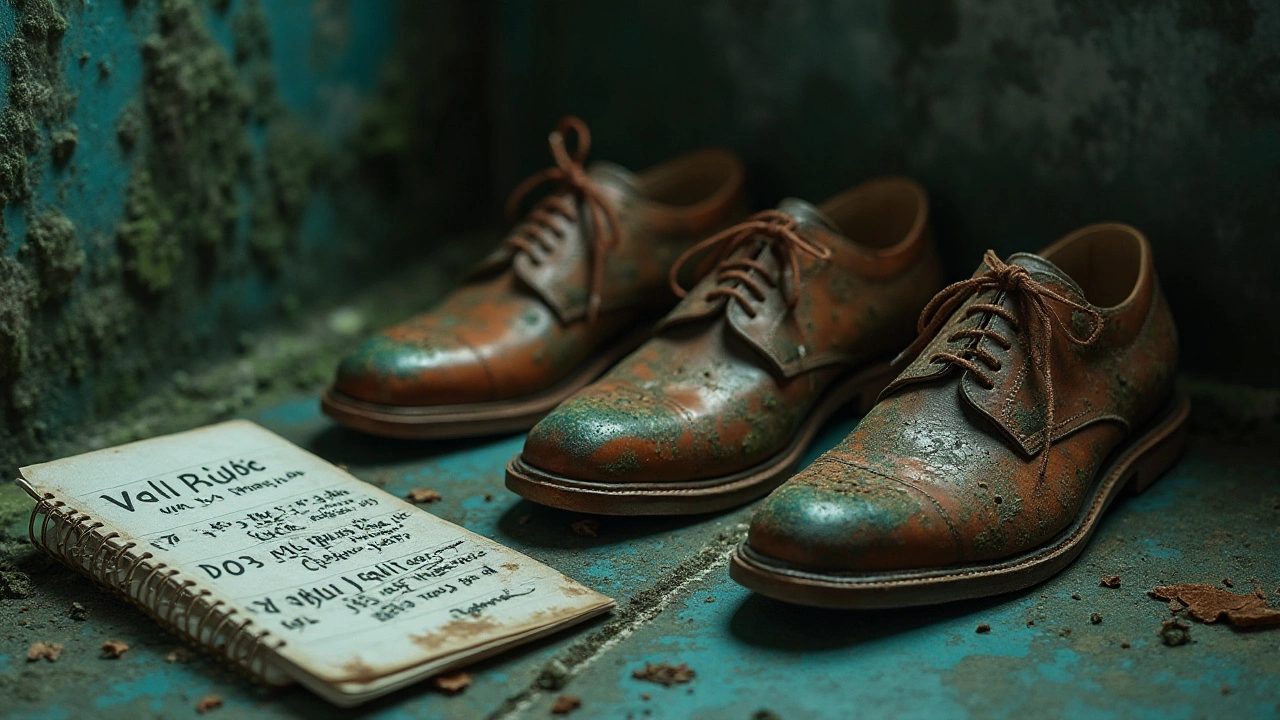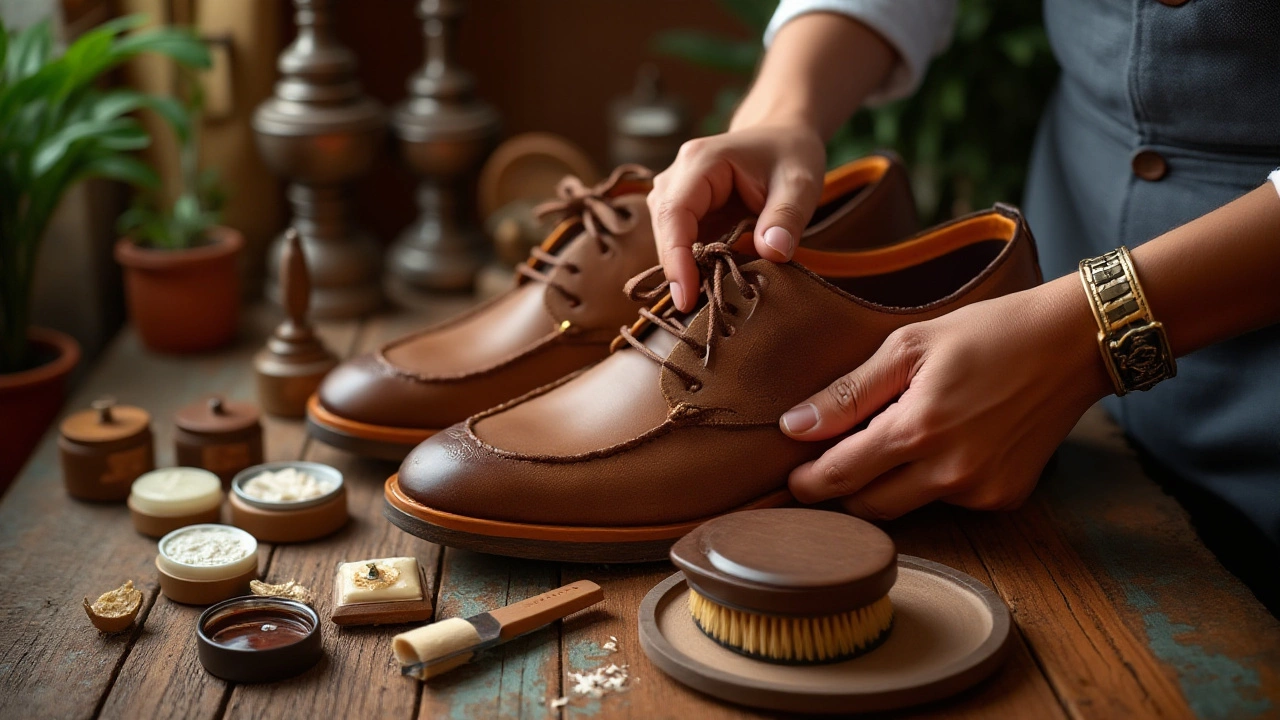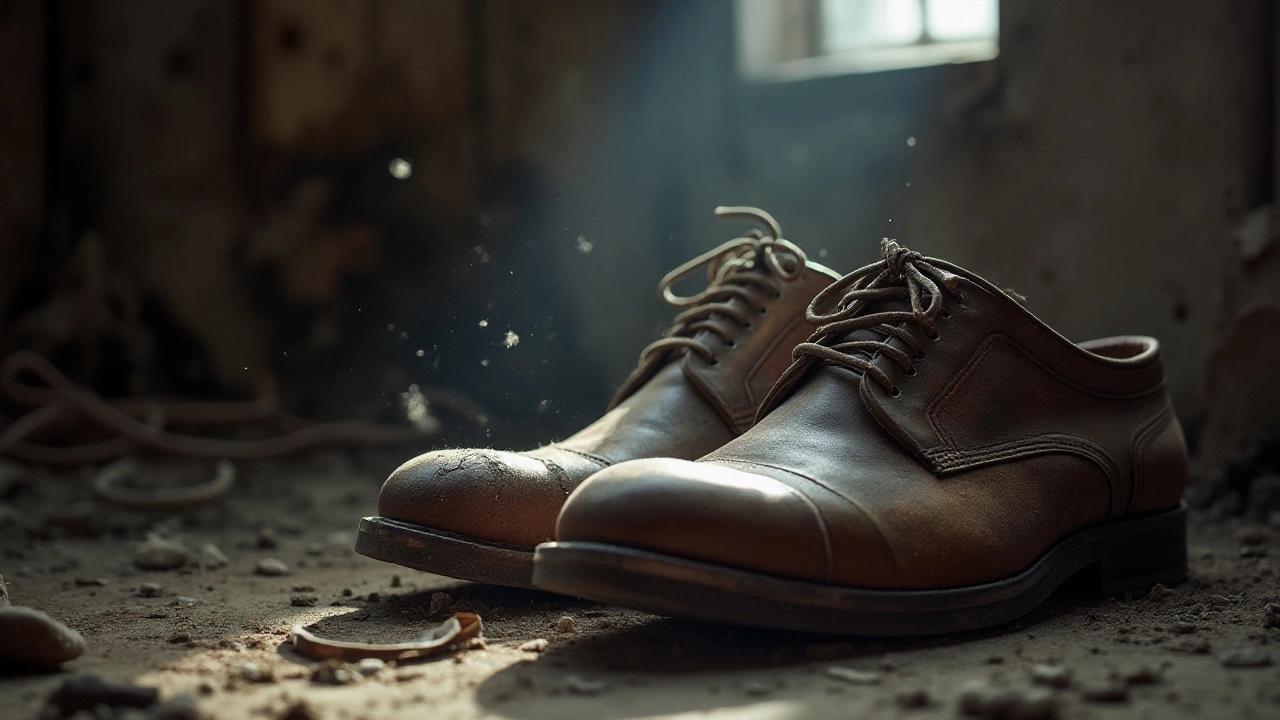Your leather shoes, those symbols of elegance and style, often rest in the comfort of your closet. However, what becomes of them when they remain untouched for extended periods? While they may seem indestructible, the truth is leather is a delicate material with its own vulnerabilities.
When these shoes are left unused, they can face the risk of cracking, fading, and even mold, all of which diminish their natural allure. Understanding these potential issues and being proactive in their care is essential for maintaining their sheen and ensuring they are always ready to shine when called upon.
- The Nature of Leather and Its Vulnerabilities
- Effects of Non-usage on Leather Shoes
- Signs of Leather Shoe Deterioration
- Effective Strategies for Shoe Preservation
The Nature of Leather and Its Vulnerabilities
Leather, beyond its elegant appearance and timeless appeal, is truly a living material. Born from animal hide and treated through an intricate tanning process, it retains certain characteristics of its origin. This process grants leather the flexibility and durability we admire, yet it also inherits sensitivities, responding to environmental conditions like a living thing. It's essential to understand that leather's ability to breathe is a double-edged sword; while this allows it to maintain a healthy moisture level, it also makes it susceptible to drying out if neglected.
The natural fibers in leather are composed largely of proteins, which at a microscopic level, resemble tightly woven threads. These threads grant leather its legendary toughness, but exposure to elements can disrupt this composition. If kept in a dry environment for too long, leather can lose its necessary oils, leading to unattractive cracking. On the flip side, excessive humidity can saturate these fibers with too much moisture, resulting in the dreaded growth of mold and mildew. This balance of moisture is why unused leather shoes require attentive care and not merely relegation to a dark corner of your wardrobe.
"Leather is the natural durability of the animal, tanned and maintained to act as our second skin," quotes renowned leather expert, William Fredrickson. Yet, like our skin, it demands its own regimen of care and attention.
Another characteristic unique to leather is its propensity to develop a patina over time—a quality that many enthusiasts find adds to its allure. This sheen or gloss is a result of the leather's interaction with its surroundings, evolving with each touch and exposure. However, when shoes sit unused, this transformation halts, and leather can lose its luster, becoming dull and lifeless. It's a symbiotic relationship; when we engage with leather, it thrives and reciprocates with beauty and resilience.
Environmental Impacts on Leather
Temperature fluctuations play a significant role in the condition of leather footwear. When exposed to high temperatures or left in direct sunlight for prolonged periods, the leather can become brittle and discolored. Conversely, a cold environment can make the material stiff, limiting its flexibility and risking potential cracks. Such vulnerabilities necessitate thoughtful storage solutions. Ensuring leather shoes are kept at a stable, moderate temperature can prevent these temperature-related damages leather deterioration. Implementing these prevention tactics anchors the longevity and functionality of your beloved leather shoes.
| Condition | Impact on Leather |
|---|---|
| Dryness | Cracking, Loss of Oils |
| Humidity | Mold, Mildew Growth |
| Heat | Brittleness, Discoloration |
| Cold | Stiffness, Cracking Risk |

Effects of Non-usage on Leather Shoes
When leather shoes are tucked away, the ticking clock begins for this luxurious material. Leather is, after all, a natural product and, as such, is subject to time’s inevitable ravages. One significant effect of leaving leather shoes unused is the risk of them drying out. This happens as the natural oils in the leather, which keep it supple and resilient, gradually evaporate. Without these oils, the leather starts to stiffen, making it prone to cracking, especially where the material naturally bends around the foot. Such cracks are often unsightly and can become serious over time, potentially compromising the structural integrity of the shoes. To mitigate these consequences, regular conditioning is crucial, even if the shoes are not in active use, as conditioning helps replenish the lost oils.
Another peril of neglect is the development of mold and mildew on leather shoes. Shoes stored in humid or damp environments are particularly vulnerable to fungal growth. Mold can penetrate the surface of the leather, leaving behind green or black spots and an unpleasant musty odor that can be very challenging to remove. Additionally, mold not only devalues the appearance of leather footwear but can also lead to degradation of the leather fibers themselves, hardening the material and potentially leading to tearing. Experts agree that ensuring leather shoes are stored in a cool, dry place with good air circulation is a vital step in preventing mold growth. As one shoe care specialist aptly puts it, "The air your shoes breathe is just as important as their polish."
Colour fading is another issue that often affects unused leather shoes. Over time, exposure to various elements, even in a closet, can lead to the fading of leather’s original rich hues. This is particularly true for brightly colored leather shoes, which may lose their vibrancy, taking on a duller, less appealing shade. Ultraviolet light from windows or overhead lights can exacerbate this fading process, making it crucial to store shoes in a darker space, preferably in a cloth bag or a box that offers protection from direct light. Additionally, the application of leather care products with UV protection can help shield leather from fading, elongating the life and luster of your shoes.
Lastly, prolonged periods of neglect can lead to deformities in leather shoes. Shoes, like any garment, naturally assume the form of the object they encase—in this case, your foot. When shoes aren't worn, the leather doesn't receive the stretching and flexing it needs to maintain its shape. Consequently, shoes may warp or sag, most noticeably around the toe and heel areas, which can affect the fit and comfort when you do decide to wear them. To prevent this, using shoe trees is a commonly recommended practice. These inserts help maintain the shoe’s shape by applying gentle pressure that mimics the contours of a foot, keeping the leather naturally stretched and aiding in moisture absorption, which is a bonus for leather longevity.

Signs of Leather Shoe Deterioration
Leather shoes, when tucked away and unused, aren't immune to the passage of time. In fact, the very conditions meant to protect them can sometimes become their adversary. As leather ages, especially without regular wear and maintenance, it begins to exhibit certain tell-tale signs of deterioration. The most common of these is cracking. When leather loses its moisture, it becomes brittle, similar to how skin can appear in arid climates without lotion. This is compounded if the shoes are stored in areas lacking humidity. Cracks don't just affect the aesthetic appeal; they compromise the very structure of the shoe, potentially leading to further damage.
Apart from cracking, fading is a significant indicator of a shoe’s time in storage. Leather, when deprived of sunlight, might lose its original color, shifting toward a dull, uneven hue. This fading can be especially apparent in brightly colored leathers, which rely heavily on their vibrant appeal. Mold and mildew are also frequent uninvited guests in the realms of disuse. Shoes stored in poorly ventilated spaces are susceptible, leaving a musty smell and visible spores that can be challenging to eradicate. In severe cases, this can permanently alter the leather’s texture.
Sometimes, these signs might sneak up quietly, only to reveal themselves unexpectedly. Unused leather shoes, although appearing immaculate while shelved, can harbor these issues beneath the surface. This is where regular checks come in handy. Maintaining a schedule to inspect your footwear can be as crucial as caring for them. “Leather is alive. It breathes, and that's why it needs attention, even when it seems to hibernate,” quips renowned cobbler, Martin Kelley. His workshop has seen its fair share of neglected shoes, each telling its unique story of misuse or disuse.
Ignoring even the subtle indicators of wear can escalate into serious deterioration. This not only detracts from the shoe's longevity but also necessitates costly repairs or replacements. By recognizing these early signs, you can take preventive measures, making the difference between extending life and hastening demise. The tell-tale signs are often small but demand a keen eye, vigilant care, and a proactive strategy for upkeep.

Effective Strategies for Shoe Preservation
Preserving the pristine condition of your leather shoes while they wait for their day out is as crucial as the initial investment you made in them. To begin with, understanding the environment in which you store your shoes can make a world of difference. Leather is a natural material that thrives in a balanced climate. Too much moisture can lead to mold, and overly dry conditions can cause cracking. Thus, the first step in preserving these treasures is a proper storage space. Aim for a cool, dry area and avoid damp basements or overheated attics. Controlling the humidity with a small dehumidifier or sachet of silica gel can keep the unwanted moisture at bay.
A routine cleaning session is another cornerstone of care for your unworn shoes. Even if they rest in the safety of a closet, dust can settle and oils can be absorbed, dulling their surface over time. Use a soft cloth to gently remove any dust particles once a month. Following that, especially for prolonged storage, applying a leather conditioner can work wonders at maintaining the leather's flexibility. This product acts like a breath of fresh air for leather, keeping it soft and supple. Conditioning is a task that should not be rushed. Allow the conditioner to be absorbed naturally, repeating this every few months.
Occasionally, you may want to rotate the pairs you store away. As odd as it sounds, taking them out for a brief walk from time to time keeps the material from becoming too stiff. If time doesn't allow for this, using shoe trees made of cedar can be a handy substitute. These not only help maintain the shoe's original shape but also naturally repel insects and absorb unwanted odors. Investing in quality shoe trees is a step that often goes overlooked, yet it can significantly prolong the lifespan of your footwear.
Experts often emphasize the necessity of breathable shoe bags for storing rarely worn shoes. These bags protect shoes from dust and scratches without trapping moisture, a common downside of plastic bags. Many shoemakers recommend cotton or other porous fabrics that allow shoes to ‘breathe’ while being safeguarded. When asked about shoe care, many leather experts echo the same sentiment: 'Treat leather as you would your skin.' This insight, while simple, highlights the importance of using non-abrasive materials and avoiding harsh chemicals.
Let's consider a noteworthy suggestion that has stood the test of time: placing your shoes on a rotation schedule. By marking your calendar or setting a reminder, you ensure that each pair gets its share of attention, keeping them from languishing unused for months on end. This practice not only helps in air circulation but also rejuvenates the leather, allowing it to breathe comfortably. With these diligent efforts, your footwear will remain as striking as ever, ready to accompany you on any occasion. Lastly, remember this insightful quote from John Lobb, a renowned shoemaker:
"A pair of well-cared-for leather shoes is like a cherished book, holding stories untold and adventures yet to come."Embrace these strategies, and your leather shoes will reward you with years of style and service.
